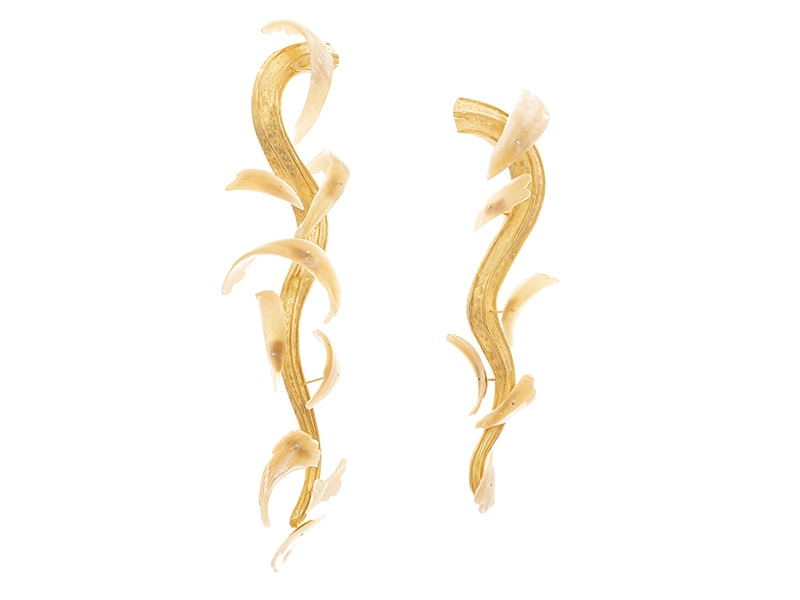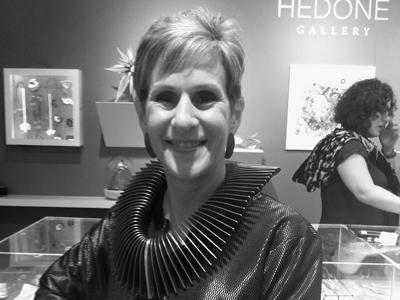More than 100 international artists applied for this year’s Young Artist Award. Taisha Carrington was chosen as one of the finalists. She received an unrestricted cash award of US$1,000 and will exhibit her work in Platina’s booth at Schmuck, in July 2022. Her work represents a group of outstanding pieces of contemporary jewelry. We asked her to tell us a bit about her background and thoughts on the future of the art jewelry field. Hers is the second of our interviews with the honorees. (Read the interview with Young Artist Award winner Mallory Weston here.)
AJF’s Young Artist Award acknowledges promise, innovation, and individuality, advancing the careers of rising artists. The competition was open to makers of wearable art age 35 and under who are not currently enrolled in a professional training program. Judging was based on originality, depth of concept, and quality of craftsmanship. This year’s jurors were 2020 AJF Artist Award winner MJ Tyson (US); collector and gallerist Karen Rotenberg (US); and educator and curator Chequita Nahar (The Netherlands).
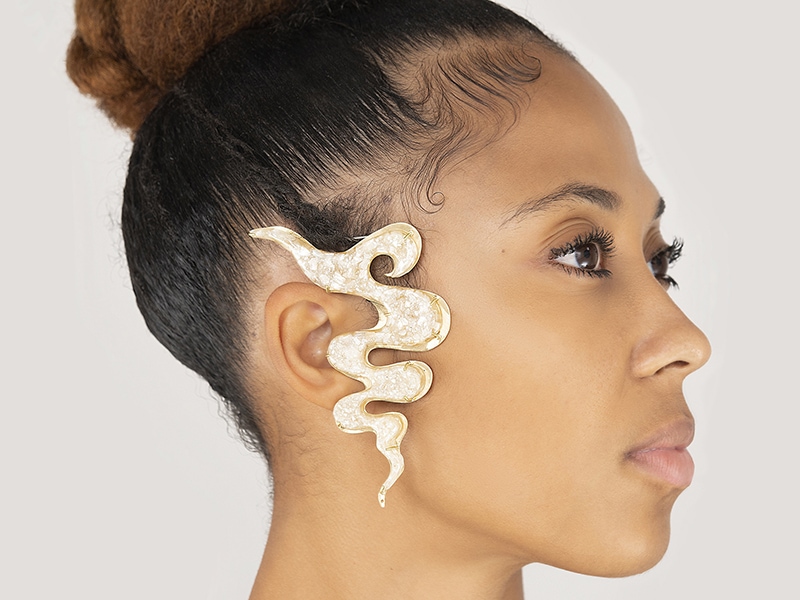
Bonnie Levine: Congratulations on being one of the five finalists of the 2022 Young Artist Award competition! That’s quite an accomplishment. Please tell us about yourself. How did you become interested in jewelry? What inspires your work?
Taisha Carrington: I’m a multidisciplinary artist exploring my identity and place through jewelry, installation, performance, and social practice. For me, jewelry was a transition from sculpture, which itself was a transition from an interest in architecture. In my mind they are all the same, just at different scales.

I learned about art jewelry in my sophomore year of college. My sculpture professor saw my penchant for detail in my sculptures and recommended it. Since then I’ve pursued telling stories through jewelry while finding deep satisfaction in honing techniques and skills. Material curiosity, fit, and function are the foundations of my fascination with the art form. So is the history of jewelry as protection, identification, or decoration.
I see my pieces as running parallel to my life. I hope that by sharing this long-form “visual journal” with others they can encounter joy, new ways of thinking, and peace. Or maybe we can help each other through exchanges of knowledge and experiences.
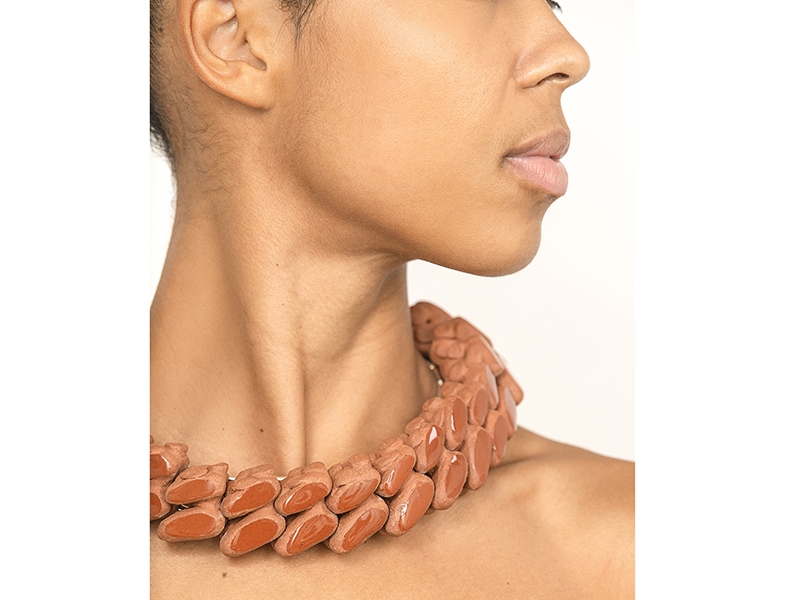
What does being a finalist mean for you? Will it influence you going forward?
Taisha Carrington: Absolutely. This acknowledgment brings special visibility and reassurance. Being a finalist and having an opportunity to exhibit at Munich Jewelry Week also exposes me to a new segment of the art jewelry field—the European side.
I’m eager to encounter new ways of thinking that might be specific to culture, geographic location, and environment outside of my familiar Caribbean and NY spheres. I’m looking forward to the conversations and exchanges with fellow artists, curators, and jewelry enthusiasts. These experiences tend to unlock whole new worlds for me. That prospect is exciting!!!
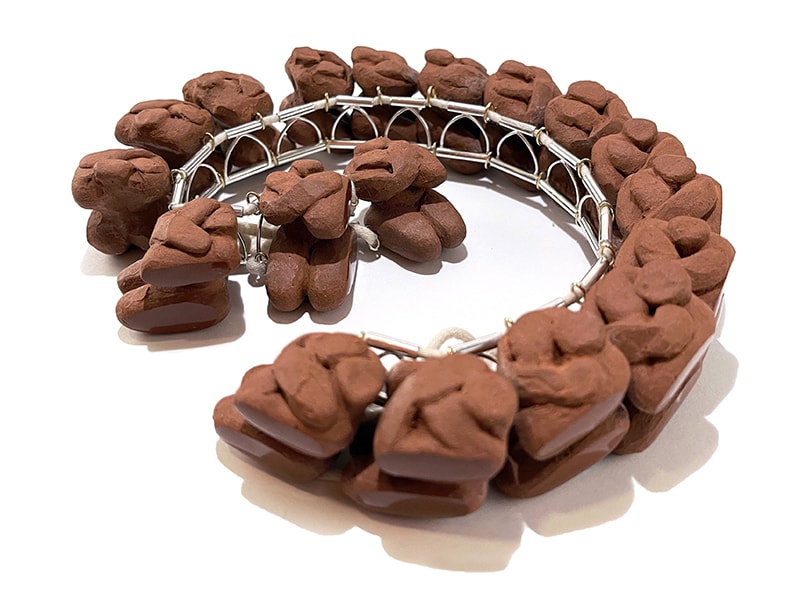
Tell us about the work you applied with.
Taisha Carrington: I applied with a body of work called I Had a Dream of a New Old Caribbean. Through this work I reimagine how Black people came to the Caribbean, proposing that they arrived as superheroes and not as enslaved people.
I use this “new history” as a reference guide when exploring my home, Barbados. Instead of seeing beaches and cane fields as reminders of a colonial past, I imagine them as homes of superheroes and as places where they would find materials for talismans.
These artworks serve as anchors on which to build new memories to combat the complexities of postcolonial trauma and foster communal healing. I gather volcanic ash, clay, whelks, and conch shell during walking meditations. I obtain the mother-of-pearl by removing the exterior of the whelk’s shell. Any unused shell pieces are returned to the beach. Fold-forming and chasing are used to make the pieces lightweight, though large. The form and materials of each piece tell individual stories of resilience, survival, creolized knowledge, and vibrant futures.
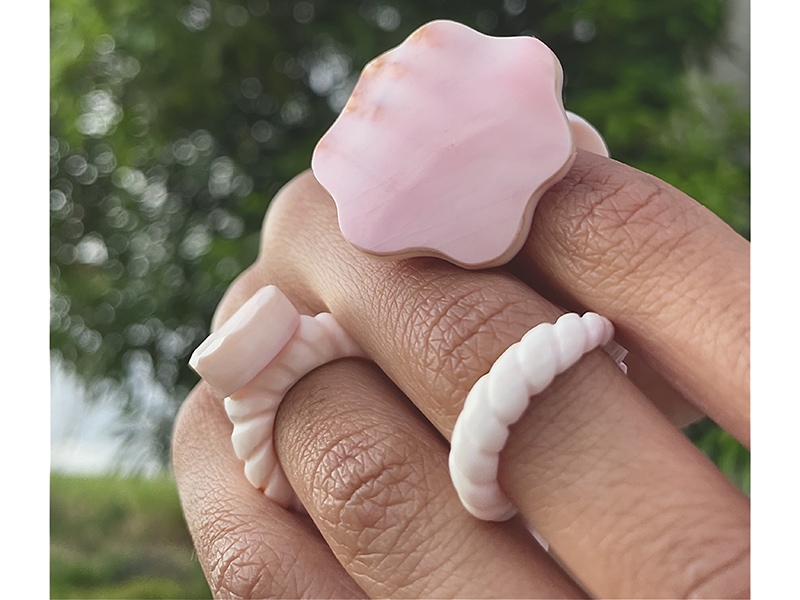
What excites you about the art jewelry field?
Taisha Carrington: Scale. Initially, the practicality of being able to produce small-scale artworks fascinated me. It eliminated my concerns about storage, travel, etc. But that was just the beginning of my fascination.
Now I’m excited about jewelry as personal performance through the lens of site-specificity. I’m an installation artist, and my large-scale, site-specific works focus on a particular environment which the human(s) become a part of. However, with jewelry there is role reversal, where the body is the environment/site which the work becomes a part of. Oscillating between these two dynamics really feeds my practice through the change of scale, site, and shift in priority of the human to made-object relationship.
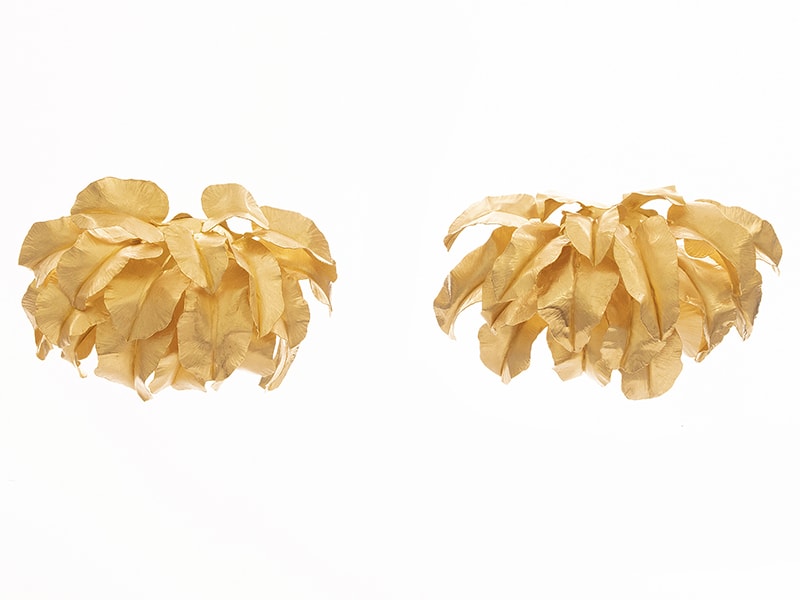
Any frustrations that you see or have experienced?
Taisha Carrington: Access to the art jewelry world while living in Barbados has been my main challenge. As previously mentioned, most of my art is site-specific, so it is important to me to be based in Barbados at this time. This choice is linked to my desire to investigate mental health, fragility of the family unit, and the central role of migration in the narrative of life in the Caribbean through lived experience.
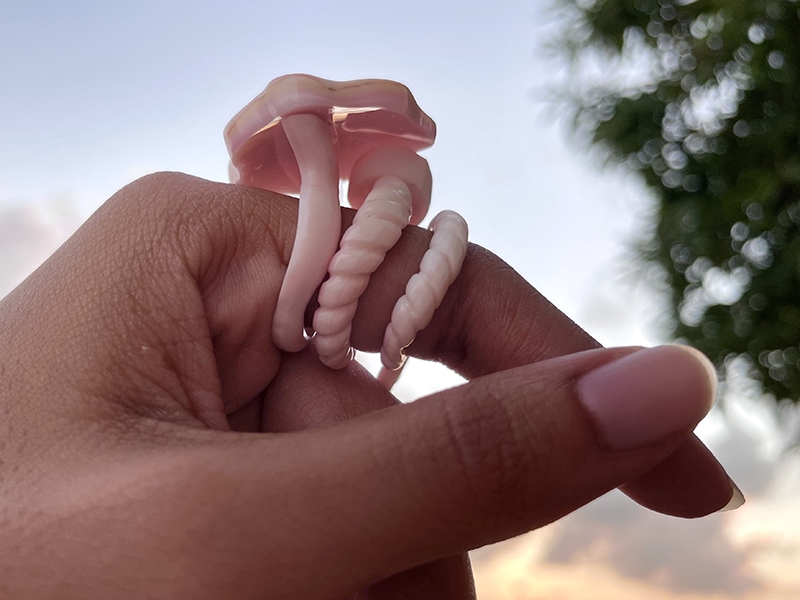
This choice comes at the cost of being outside of a place with an abundance of opportunity. Elements that contribute to how we grow as artists—access to libraries, museums, visiting exhibitions, networking, etc.—are largely absent. However, I have found alternatives, aided by the pandemic, actually. With the transition to online events, these barriers have been weakened.
I tune in to so many artist talks via Zoom. I “visit” so many online exhibitions to see work, and take part in online residencies that allow me to meet other artists and have conversations. These are mostly the ways I have found to address the lack of community. Instead of being hindered by these frustrations, I am working to help change them.
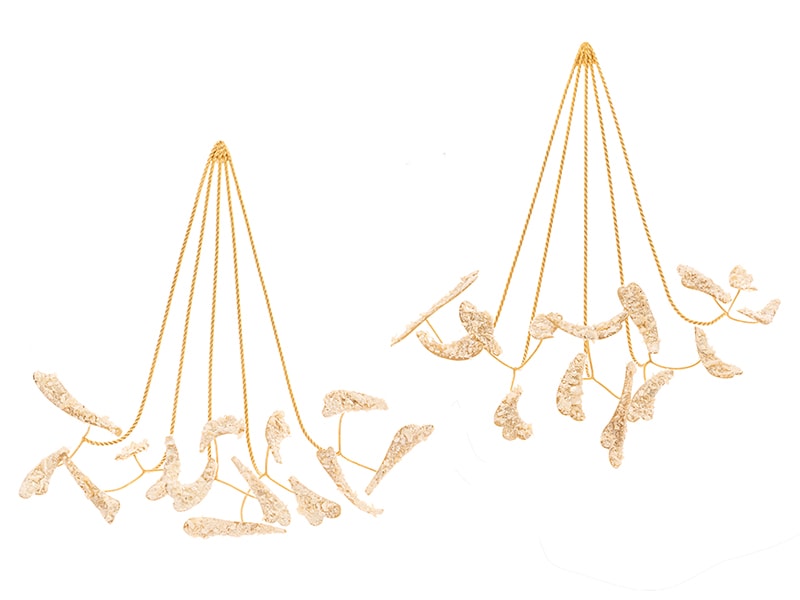
Where do you think the art jewelry field is going? Do you see new and exciting trends?
Taisha Carrington: This is a tough question because I like where the field is now. The work I see from fellow artists is evocative, relevant, and speaks well to our current affairs globally. The ability to learn, feel, and share through artwork is what I value most, and I see a lot of this around me. So I think the art jewelry field is moving in a great direction.
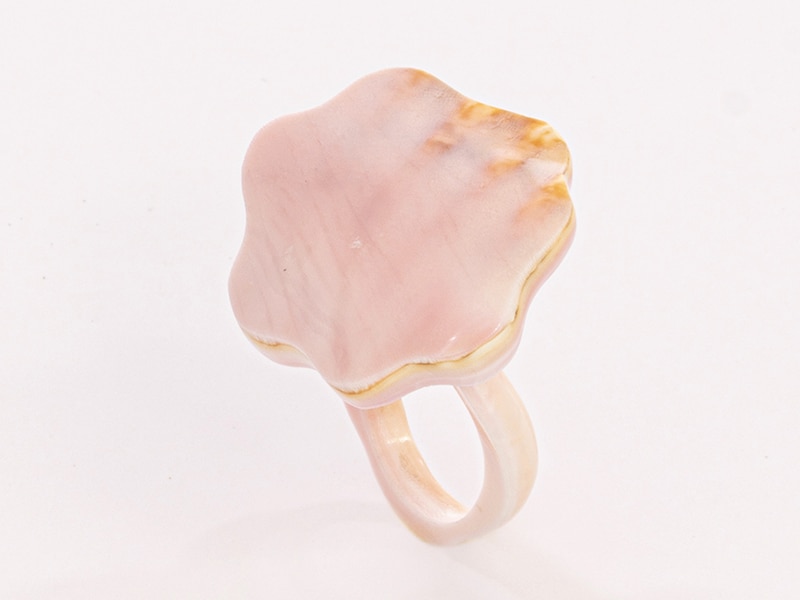
If you could write a master plan for your practice, where would you like to be five years from now?
Taisha Carrington: In five years I will likely have completed my MFA and hope to have had a solo show. I will still be working to affect the practicality of pursuing a career in this field from Barbados. I will also still be working to amplify our voices about the needs for climate justice, fair treatment, and our power to envision vibrant futures for ourselves. I also hope to grow my practice with residencies in African countries to learn more about the origin of Barbadian people and culture and reestablish links between our ways of living.
